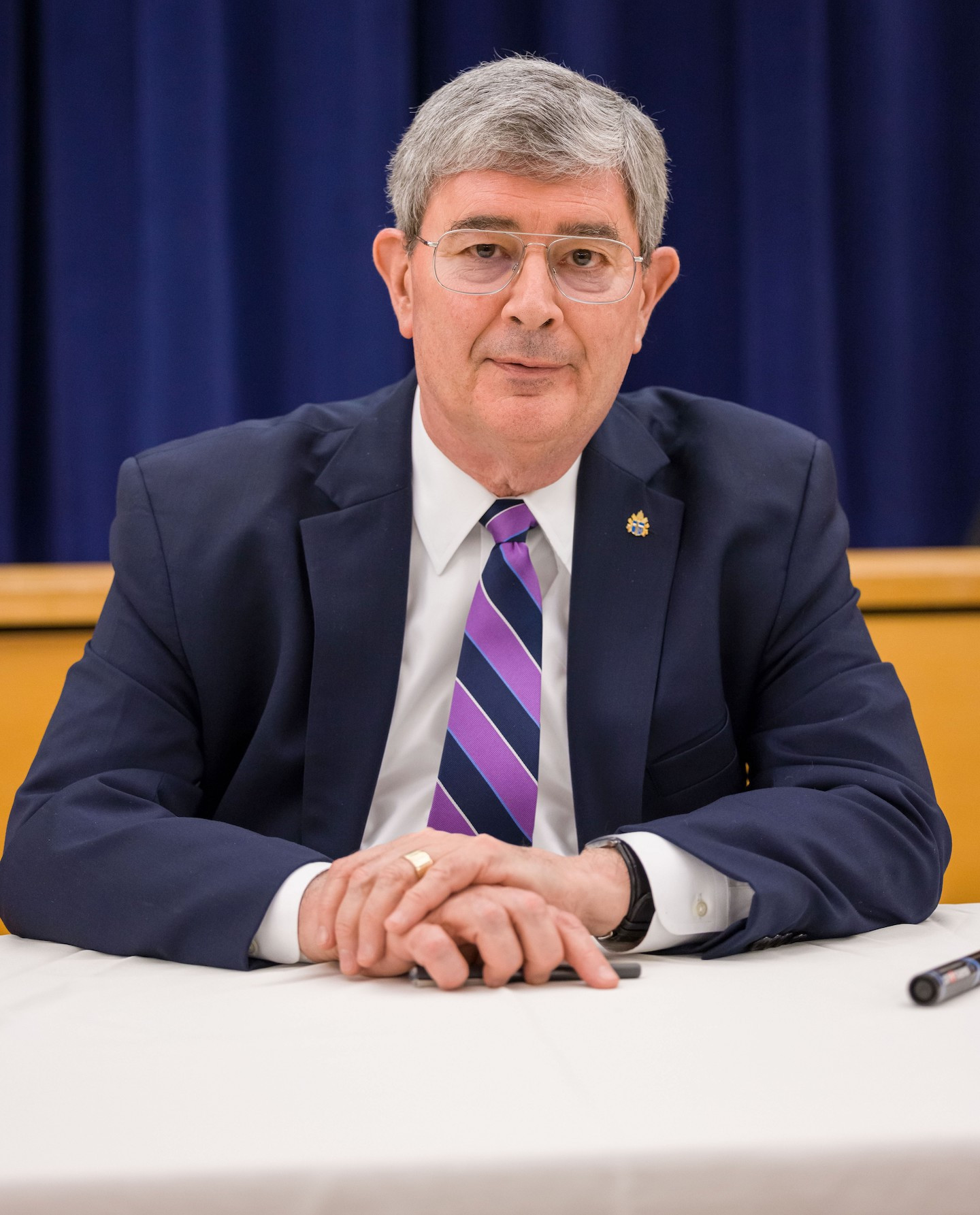In mid-May, I spent two intense days in Lisbon, where a new Portuguese edition of my Letters to a Young Catholic was being prepared as a catechetical resource for World Youth Day 2023. In and around that wonderful city, I had the pleasure of meeting with Catholic educators from all over Portugal; I was hosted for talks at two vibrant parishes; and I got a whirlwind tour of World Youth Day GHQ: a former military commissary, where a different kind of army—a regiment of energetic young Catholic activists—was handling the logistics of an international gathering that would tax the capacity of the most expensive society “event planner.” In each of these encounters, I found a great hope that WYD 2023, under the maternal protection of Our Lady of Fatima, would energize the New Evangelization in Portugal and perhaps throughout Western Europe.
So I cannot imagine that my Portuguese friends were replete with pentecostal joy when the coordinator of World Youth Day, Lisbon auxiliary bishop Américo Aguiar, said in a July 6 interview that, at WYD 2023, “we don’t want to convert the young people to Christ or to the Catholic Church or anything like that at all.” Rather, WYD 2023’s goal was to create a situation in which each young person could say, “I think differently, I feel differently, I organize my life in a different way, but we are brothers and we go together to build the future.”
This striking renunciation of the Great Commission—“Go and make disciples of all nations . . . teaching them all that I have commanded you” (Matt. 28:19–20)—might not have resonated beyond Portugal had Pope Francis not announced, three days later, his intention to create Bishop Aguiar a cardinal on September 30. The usual internet brawl ensued, and the Lisbon auxiliary, evidently feeling some pressure, explained that his words had been taken out of context; all he was saying was that there would be no “proselytism” at WYD 2023.
What the bishop and cardinal-designate did not explain was why fulfilling the Great Commission through evangelization and catechesis—hitherto understood to be essential components of any World Youth Day—was “proselytism.”
Pondering this latest example of Catholicism dumbed down to the Religion of Nice, I remembered a radically different approach to explaining the relationship of the Lord Jesus to the yearnings of young hearts. It was the approach taken by Pope John Paul II at Tor Vergata in Rome, during the night vigil before the closing Mass of World Youth Day 2000. There, the pope put Christ at the center of an immense gathering of Catholic young adults with these memorable words:
It is Jesus you seek when you dream of happiness; he is waiting for you when nothing else you find satisfies you; he is the beauty to which you are so attracted; it is he who provokes you with that thirst for fullness that will not let you settle for compromise; it is he who urges you to shed the masks of a false life; it is he who reads in your hearts your most genuine choices, the choices that others try to stifle. It is Jesus who stirs in you the desire to do something great with your lives, the will to follow an ideal, the refusal to allow yourselves to be ground down by mediocrity, the courage to commit yourselves humbly and patiently to improving yourselves and society, making the world more human and more fraternal.
Such robust Christocentrism is not, I submit, “proselytism.” It is a Christian witness to Christian truth. It’s an affirmation that combines conviction with compassion. It’s an explication of the basic confession of Christian faith: Kýrios Iēsoûs, “Jesus is Lord.” And that Christocentrism is what has inspired millions of the young Catholics who have attended World Youth Days since 1984 to be the missionary disciples they were baptized to be.
As for this tiresome psychobabble about walking together into the future, Bishop Aguiar and others who indulge it might reconsider St. Luke’s beautifully crafted story of the two disciples walking to Emmaus on Easter Sunday afternoon (Luke 24:13–35). They were walking together. But they were walking in the wrong direction until they encountered the Risen One. Then they started walking together again, but now in the right direction: toward a Jerusalem transformed by the Resurrection, from which they and the others who had met the Lord Jesus would be sent throughout the world to invite others to “the city of the living God” (Heb. 12:22).
That is the “walking together” that World Youth Days should inspire: a walking together that leads to Christ and to mission.
George Weigel’s column “The Catholic Difference” is syndicated by the Denver Catholic, the official publication of the Archdiocese of Denver.

George Weigel is Distinguished Senior Fellow of Washington, D.C.’s Ethics and Public Policy Center, where he holds the William E. Simon Chair in Catholic Studies.
First Things depends on its subscribers and supporters. Join the conversation and make a contribution today.
Click here to make a donation.
Click here to subscribe to First Things.
Image by Deensel. licensed via Creative Commons. Image cropped.
You have a decision to make: double or nothing.
For this week only, a generous supporter has offered to fully match all new and increased donations to First Things up to $60,000.
In other words, your gift of $50 unlocks $100 for First Things, your gift of $100 unlocks $200, and so on, up to a total of $120,000. But if you don’t give, nothing.
So what will it be, dear reader: double, or nothing?
Make your year-end gift go twice as far for First Things by giving now.


